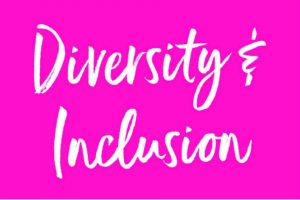
Inclusion by instinct is the thread that will be running through the Home Office Diversity & Inclusion (D&I) Strategy, to be published later this year. Achieving the aims of the new cross-Civil Service D&I Strategy and becoming the UK's most inclusive employer relies on action by everyone, led by departments, functions and professions to develop their own challenging targets for representative diversity. The Home Office D&I Strategy is central to the effort in my department to create an inclusive and welcoming culture for all staff.
 But why the question mark in my heading? Because it’s hard to see that you can just decide – as an organisation or an individual – to make inclusion instinctive, and then tell people that’s how they must be. It reminds me of being told on family holidays in the 1960s, with us four siblings packed into the back seat of a Peugeot 403, that enjoyment was compulsory! Nonetheless inclusion by instinct is a serious goal – we know we have much further to go to make the most of what everyone has to offer right across the department, a challenge shared by the wider Civil Service.
But why the question mark in my heading? Because it’s hard to see that you can just decide – as an organisation or an individual – to make inclusion instinctive, and then tell people that’s how they must be. It reminds me of being told on family holidays in the 1960s, with us four siblings packed into the back seat of a Peugeot 403, that enjoyment was compulsory! Nonetheless inclusion by instinct is a serious goal – we know we have much further to go to make the most of what everyone has to offer right across the department, a challenge shared by the wider Civil Service.
With Home Office colleagues I’ve been involved in a Cambridge University research project conducted by Murray Edwards College into how collaboration between men and women on gender equality can build a workplace culture that is far more inclusive. Previous research had tended to focus on ‘fixing women’ – how women needed to change in order to have their voices heard and to fulfil their potential. One of the things I like most about the Murray Edwards College's work is that it has a practical dimension. Inclusion is a large and complex concept and it’s easy to be daunted. We risk agonising about it rather than doing something useful to achieve it. Their work shows how we can apply the research findings in our day-to-day working lives – and it’s all very do-able. And for me it has resonance and relevance beyond gender equality and across all of our diversity priorities.
I think that our best chance of getting to inclusion by instinct is to do some doing. There’s a prior step, of course, which is listening – to make sure we are hearing the many different voices in our organisations. I will be doing that in the Home Office as our new Diversity and Inclusion Champion. I will also be staying close to the People Survey, because we need the best possible picture of what it’s like to work in the Civil Service so we can get the doing part right.
As for the doing, I’d suggest the following:
- Stop, think, and ask yourself first if you’ve shared your own voice, and heard the voices of others. Everyone has a responsibility to help improve things.
- Find out more. Read the research. Listen to some more voices. Talk with your colleagues about what you’re hearing and thinking.
- Then pinpoint some specific things to do. It’s about small steps as well as big ones. Get out of your comfort zone (I always think that’s the best way to learn) and be deliberate and purposeful. Try things and see what difference they make.
 I doubt we’ll spot the moment when we have become inclusive by instinct. It might be sooner or later. The key thing is that we make it our priority to get there.
I doubt we’ll spot the moment when we have become inclusive by instinct. It might be sooner or later. The key thing is that we make it our priority to get there.
